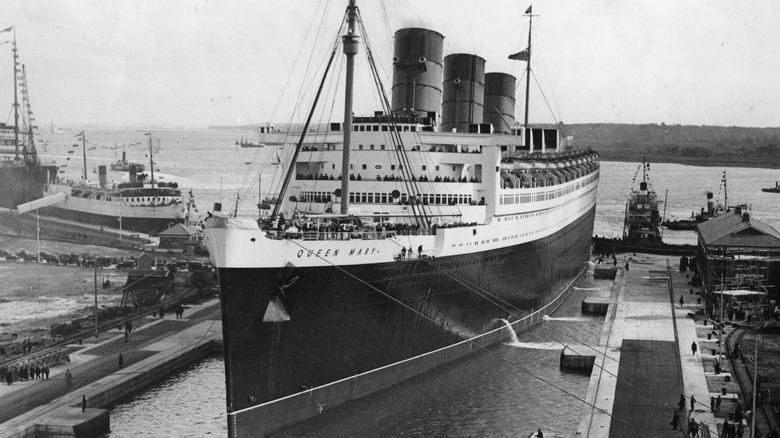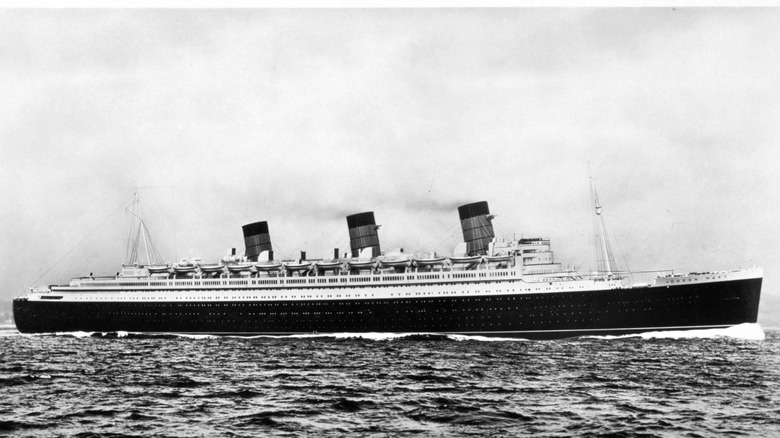The Luxury Ocean Liner That Became A War Hero And Transported Over 2 Million People
Prior to the advent of easy travel by air, if you wanted to get across the ocean, you needed to take a boat. If you wanted to get there in style, you took an ocean liner. One such example was the R.M.S. Queen Mary.
When it was constructed in 1937, the Queen Mary was the most opulent structure that had up to that point ever floated on the ocean. Inside the vessel was a huge ballroom, multiple dining areas, an onboard hospital, cocktail bars, and more for its guests to cruise across the Atlantic is as much style as the mid-1930s would allow. When discussing large English cruise liners from the first half of the 20th century, one can't neglect to draw comparisons to the Titanic which sank after hitting an iceberg in the North Atlantic in 1912. The Queen Mary was significantly larger in every possible dimension. At just under 1,020 feet, it was 137 feet longer than the Titanic. The ship's beam width (meaning the width of the vessel) was over 118 feet compared to the Titanic's 92 feet, and it had a gross tonnage of 81,237. The Titanic was just 46,328. The Queen Mary is also longer than many cruise ships that sail today. For example, the Carnival Radiance only stretches 893 feet.
When World War II kicked into high gear in 1939, the Queen Mary eschewed its luxury trappings and was pressed into service as a troop carrier for the Allied powers.
The Grey Ghost
In service to England, the ship was nicknamed the "The Grey Ghost" as it was painted to better blend in with the horizon should it run into enemy vessels. It was also fitted with naval guns. Prior to the war, the Queen Mary could carry just over 2,100 people swathed in the finest luxury money could buy. During the fight against German dictator Adolf Hitler, that capacity was increased to 5,500, according to Queen Mary history. Over the course of the war, it would carry upwards of 15,000 soldiers at a time.
The Queen Mary also had a trick up its sleeve. It was really fast for its day with a top speed of 32 knots (almost 37 miles per hour), allowing it to outrun many of its adversaries. The ship first saw service in the Pacific Ocean where it helped Australian troops until 1943. After, it moved to serve in the Atlantic theater until the end of the war.
It returned to luxury cruise ship status after the war and sailed until 1967. According to the hotel that holds the Queen Mary in Long Beach, California, the Queen Mary transported almost 3,000,000 people over the course of her career, including 2.2 million passengers and more than 800,000 soldiers.

